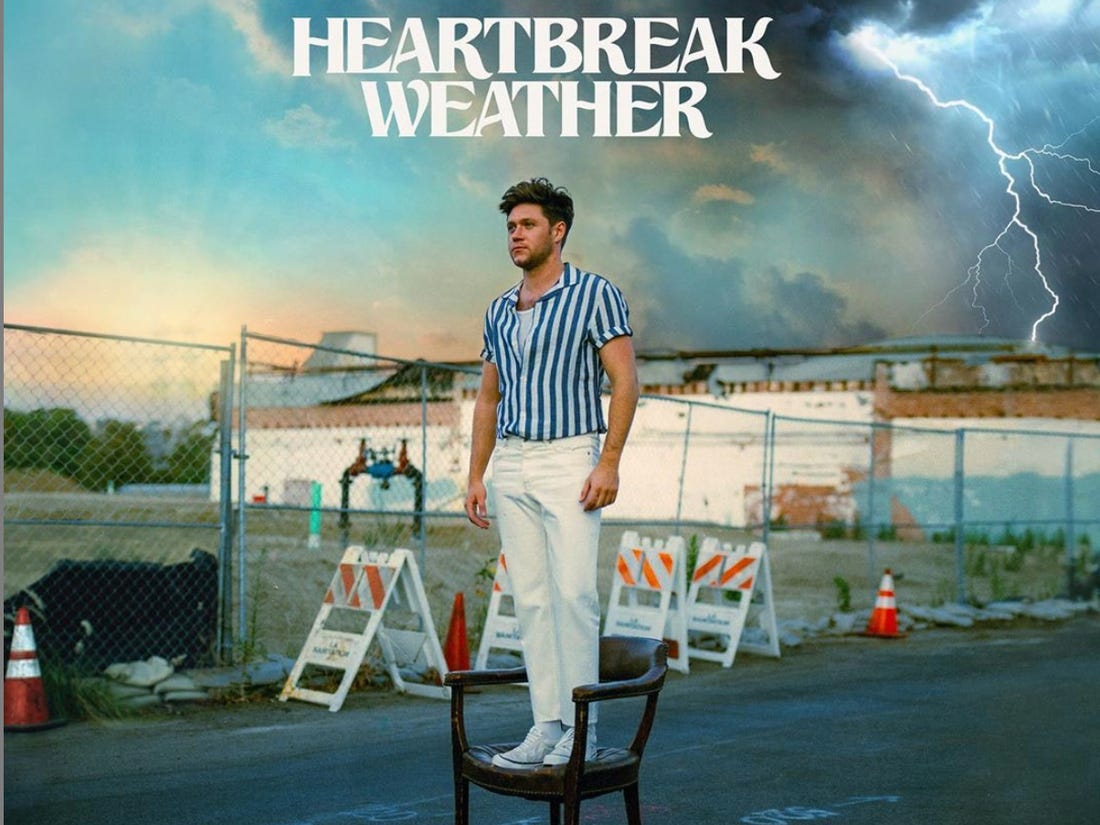Chaos ensues on the meteorological cover of Niall Horan’s new album Heartbreak Weather. As human beings, we love to equate atmospheric conditions with our past and present emotions, particularly when we’re experiencing adversity. Confusion and agony appear as key operators for Horan’s tempestuous two years amidst a breakup with Hailee Steinfeld-a strenuous process that both artists wanted to keep under wraps from the public eye.
Most artists who experience this universal sadness revert to the predictable route of folksy deliberations and muted sonics. In fact, Horan experimented with these delicate sounds on his debut solo endeavor Flicker, a project that represented a stark contrast to One Direction’s glamorized pop anthems.
Considering the circumstances, one would assume a continuation of isolated songwriting. In retrospect, Horan’s always felt detached from the rockstar lifestyle. He’s never re-branded himself as a paradigmatic sex symbol like Harry Styles, and he’s shied away from the simplistic nature of many pop-rap crossovers (ahem; Liam). His art usually reflects a low-profile existence.
If anything, Heartbreak Weather contradicts what most people expected a Niall Horan heartbreak album to look like. It’s bombastic in nature, limited in songwriting scope, and tonally deficient in concept. The album starts with trite optimism, as Horan triumphantly exclaims his desired exuberance despite an empty heart and constant anguish (“Runnin’ around the same bars I’ve been in/It can be so lonely in this city/But it feels different when you’re with me”).
Horan also enjoys painting vivd pictures of a future life filled with stability and starlit nights (“Black and White”) over inconspicuous drum rhythms; though much of this scenery does little to evoke nuanced emotion. “Dear Patience” felt like the first semblance of a well-crafted acoustic ballad, as Horan pleads for a more peaceful livelihood where things start to slow down. His rustic tone suggests he’s been chasing this for years-probably since the band broke up five years ago.
The idea of this split-weather theme where the sunlight briefly juxtaposes a thunderstorm would be a cool thought to explore in the context of love, but only when it’s done consistently. Horan tends to tip toe around his genuine emotions with songs like “Bend the Rules” and “Small Talk.” “I’m not saying that you’re lying, but you’re leaving out the truth,” he sings without directly addressing the problem.
Even amongst these inconsistencies, Heartbreak Weather aimlessly pursues a standard formula for millennial pop albums. Jubilation in the beginning (“Black and White”), recklessness following the breakup (“Small Talk” and Brit-pop track “Nice to Meet Ya”), and coming to terms with a hardened reality by the end of it all (“San Francisco” and “still”).
His influences aren’t as intricate or diverse as Flicker. Most of the album’s textures are ripped straight from the Arctic Monkeys’ repertoire (especially “Nice to Meet Ya”) or vibrant 1980s pop instrumentals-neon-drenched guitar melodies, slow-building drums, exotic synths patterns. Very rarely is he reaching for the grandiose heights set by the cover art. Sometimes, the raw emotion gets drowned out by the cheap danceability of it all, like on the confessional “Cross Your Mind;” one of the few moments where Horan actually addresses the aforementioned breakup.
Advertisement
It’s refreshing to see an artist of Horan’s stature vying for normalcy, despite what the mainstream media may conclude about his life. The next step for the singer/songwriter is finding a formative avenue of musicality, because his current path carries an expiration date.
Advertisement
